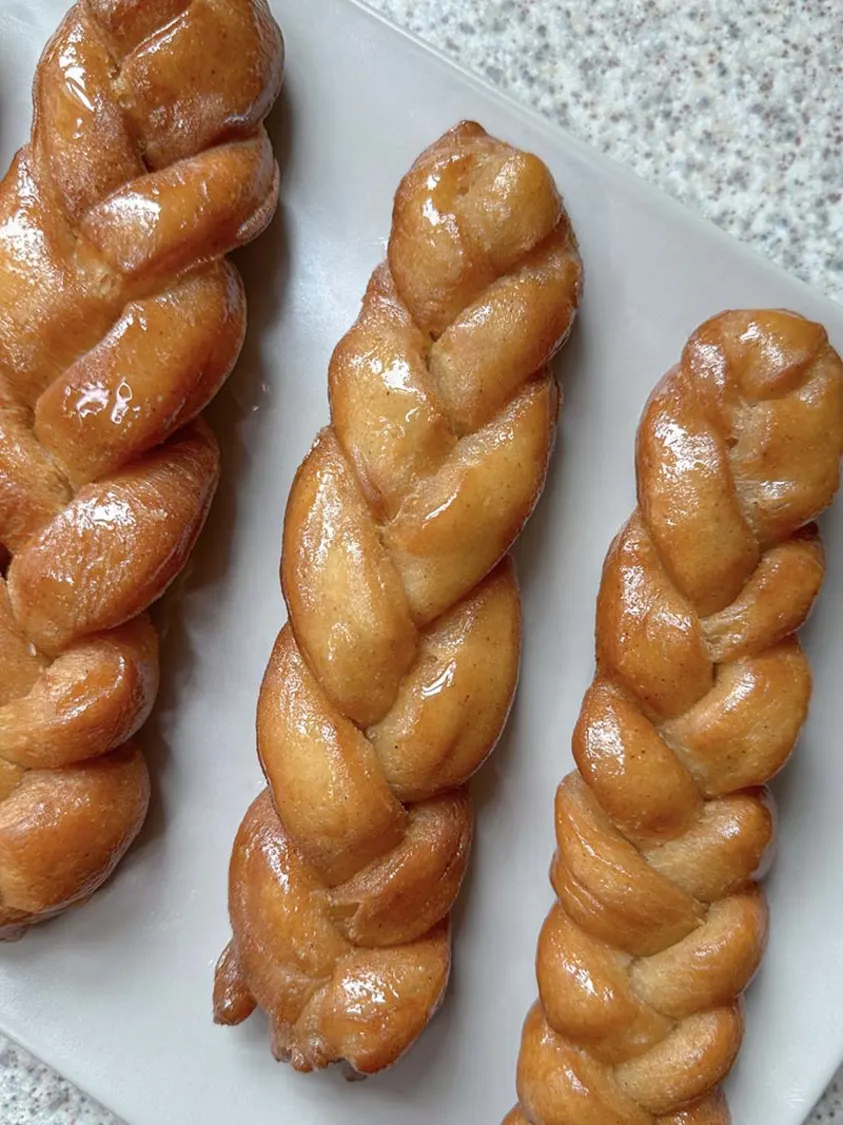
Koesisters
Spiced doughnuts dipped in syrup and coated in coconut.
Ingredients
- •Flour
- •Yeast
- •Sugar
- •Butter
- •Eggs
- •Milk
- •Mixed spices
- •Syrup
- •Desiccated coconut
Instructions
Make Dough
Prepare spiced dough and let it rise
Shape & Fry
Form into plaits and deep fry until golden
Finish
Dip in syrup and coat with coconut
Koesisters (not to be confused with koeksisters) are a beloved Cape Malay delicacy that holds a special place in South African cuisine. These spiced doughnuts are instantly recognizable by their oval shape, distinctive plaited or twisted form, and generous coating of desiccated coconut. The dough is infused with aromatic spices like cinnamon, cardamom, ginger, and aniseed, creating a complex flavor profile that sets them apart from ordinary doughnuts.
The history of koesisters is deeply rooted in Cape Malay culture, brought to South Africa by Malaysian and Indonesian slaves in the 17th and 18th centuries. The name is believed to derive from the Afrikaans word "koesister," though its exact etymology remains debated. These treats have become a cherished part of Cape Town's Sunday morning traditions, with many families making their way to local vendors to purchase fresh, warm koesisters after church.
Making koesisters is a labor of love that requires patience and skill. The dough needs to be perfectly spiced and allowed to rise properly before being shaped into their characteristic plaited form. After deep-frying to a golden brown, they're briefly soaked in a spiced syrup while still hot, allowing them to absorb the sweetness, before being rolled in coconut. The result is a tender, moist interior with a slightly crispy exterior, all enveloped in sweet, spicy flavors.
While the traditional recipe remains popular, modern variations might include additional spices like nutmeg or allspice, or experiment with different syrup flavors. Some bakers add potato to their dough for extra softness, while others might incorporate orange zest for a citrusy twist. However, purists maintain that the classic recipe, passed down through generations, produces the best results.
In South African culture, koesisters are traditionally enjoyed for breakfast or as a mid-morning treat, always accompanied by a cup of tea or coffee. They're particularly popular during religious celebrations and festive occasions in the Cape Malay community. Many Cape Town residents have their favorite koesister vendors, and debates about who makes the best ones are common among locals.
From a nutritional standpoint, koesisters are undeniably an indulgent treat. Each serving contains approximately 250-300 calories, with significant sugar content from the syrup coating. The deep-frying process also means they're high in fat. While they're not allergen-heavy, they do contain gluten from the flour and may not be suitable for those with coconut allergies. As with most sweet treats, they're best enjoyed in moderation as part of a balanced diet. Their rich spice content, however, does offer some traditional health benefits, as spices like cinnamon and ginger are known for their anti-inflammatory properties.
